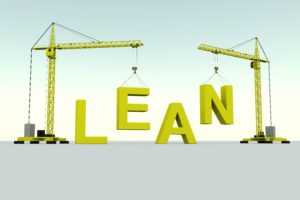
LEAN Construction
What is LEAN Mangement?
LEAN management originated in the Japanese automotive manufacturing industry, more specifically at Toyota. It is based on industrial tools and methodologies such as 5S, VSM, KANBAN, Kaisen and others. The idea behind LEAN management is to eliminate waste of all kinds (e.g. unnecessary travel) and to improve the quality of production.
This working methodology soon found its way outside the sphere of the automotive industry. Its application in the construction industry gave rise to LEAN construction.
LEAN Construction, What are the challenges for the construction industry ?
LEAN construction is rapidly becoming a method of work organisation based on continuous improvement. It is not about making big changes but about multiplying small actions that have an impact on reducing sources of waste and inappropriate and time-consuming work processes. It is about each link in the value chain thinking about how to work more effectively in collaboration with other stakeholders.
As a result, LEAN is undeniably compatible with BIM and extends the notion of collaboration to better manage processes from the shop floor to the construction site.
ProCAL: LEAN integrated into the implementation of the Building Envelope
The building envelope companies, like other building companies, suffer from the slowdown in productivity, the extension of the implementation time (it is estimated that 80% of a journeyman’s time is spent travelling during a working day. This reduces the effective working time to 20%), the accumulation of errors on site, the over/underestimation of products and materials used, overlapping of planned operations or loss of time between these operations.
All these factors contribute to the reduction of the company’s margins and therefore its long-term survival.
